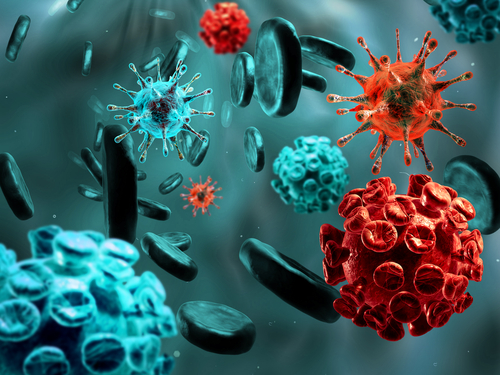The human immune system exerts protective effects against pathogens following a pathogenic attack by producing antibodies, which are proteinaceous compounds that surround the pathogen when coming in some form of contact. Another class of immune proteins, which are part of a system called the complement system, then come in contact with these antibody-coated bugs and create fatal pores on their cell surfaces that eventually lead to their death.
However, in some cases, the presence of numerous copies of these antibodies cannot guarantee protection against some classes of resistant superbugs, the most common being the respiratory pathogen Pseudomonas aeruginosa. Because of this, the bugs continue to circulate in the bloodstream, causing chronic infection which can lead to a condition called bronchiectasis, characterized by persistent cough, shortness of breath, and chest pain.
A group of researchers at the University of Birmingham published a study regarding this survival mechanism of superbugs in the bloodstream in The Journal of Experimental Medicine, entitled “Increased severity of respiratory infections associated with elevated anti-LPS IgG2 which inhibits serum bactericidal killing.” The findings showed among a subset of patients with bronchiectasis that the bacteria had a collection of extra long sugar molecules on their cell surface, which in turn bonded with a specific antibody, IgG2, which swung the immune responses in their favor. This led to their survival in the bloodstream and hampered both air flow and lung function. This feature was exclusive to Pseudomonas aeruginosa and it was further seen that on removal of these sugar-specific antibodies, the immune system’s defense mechanism was restored.
The exact mechanism by which the IgG2 antibodies exert a protective effect on the bacteria is unknown, but a common understanding suggests that these antibodies might be able to divert the binding of complement proteins to vulnerable parts of the bacterial cell membrane, preventing pore-formation and subsequent lysis.
The findings of this study further highlight the different mechanisms undertaken by bacterial pathogens to acquire resistance from any form of defense mechanism in the body, be it innate or adaptive immunity, or external sources like antibiotic treatments. Antibiotic resistance is a matter of utmost concern for maintaining public health, and molecular insights into these kinds of in vivo pathogenic defense mechanisms would be significantly beneficial in developing innovative anti-microbials instead of the existing generic ones.

